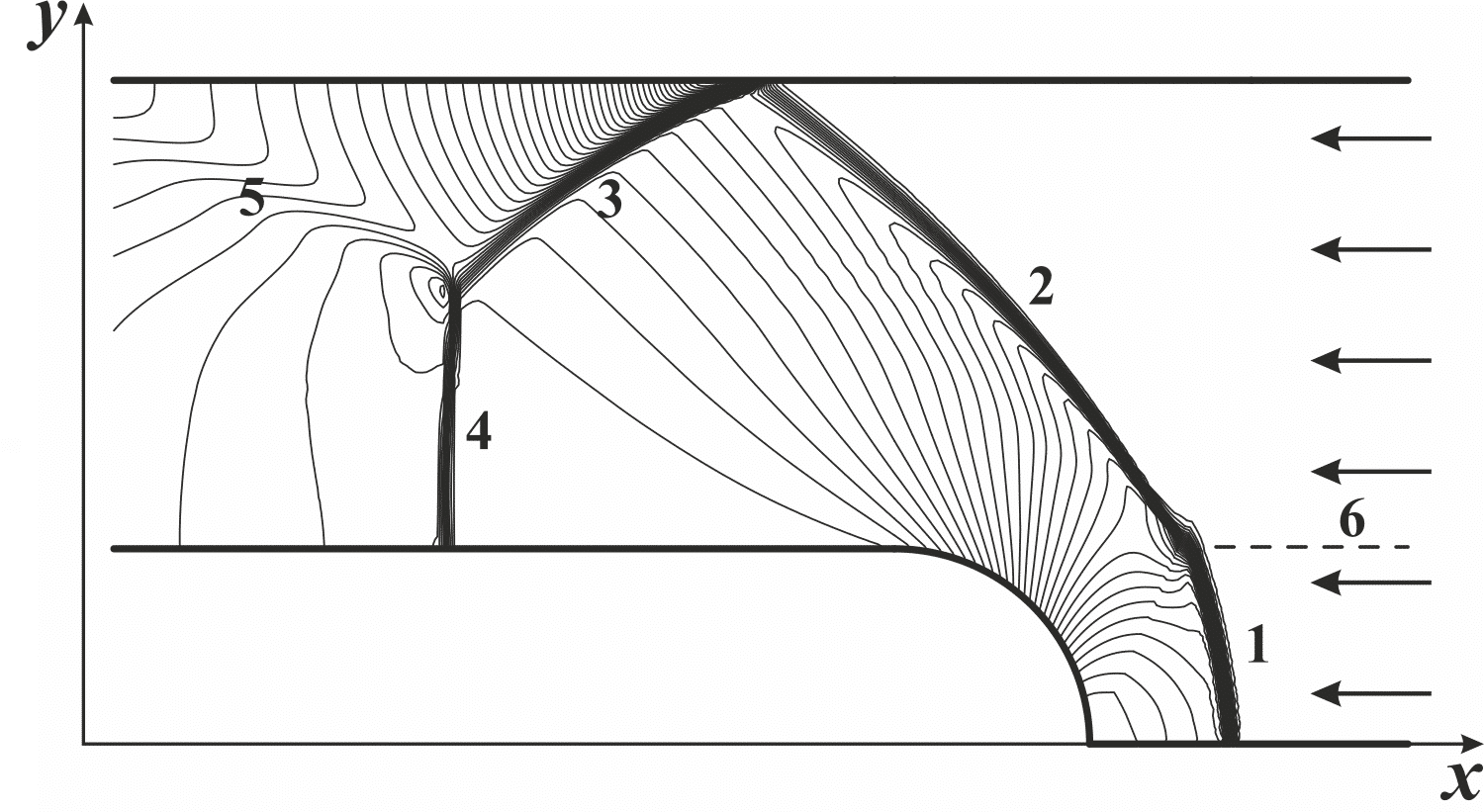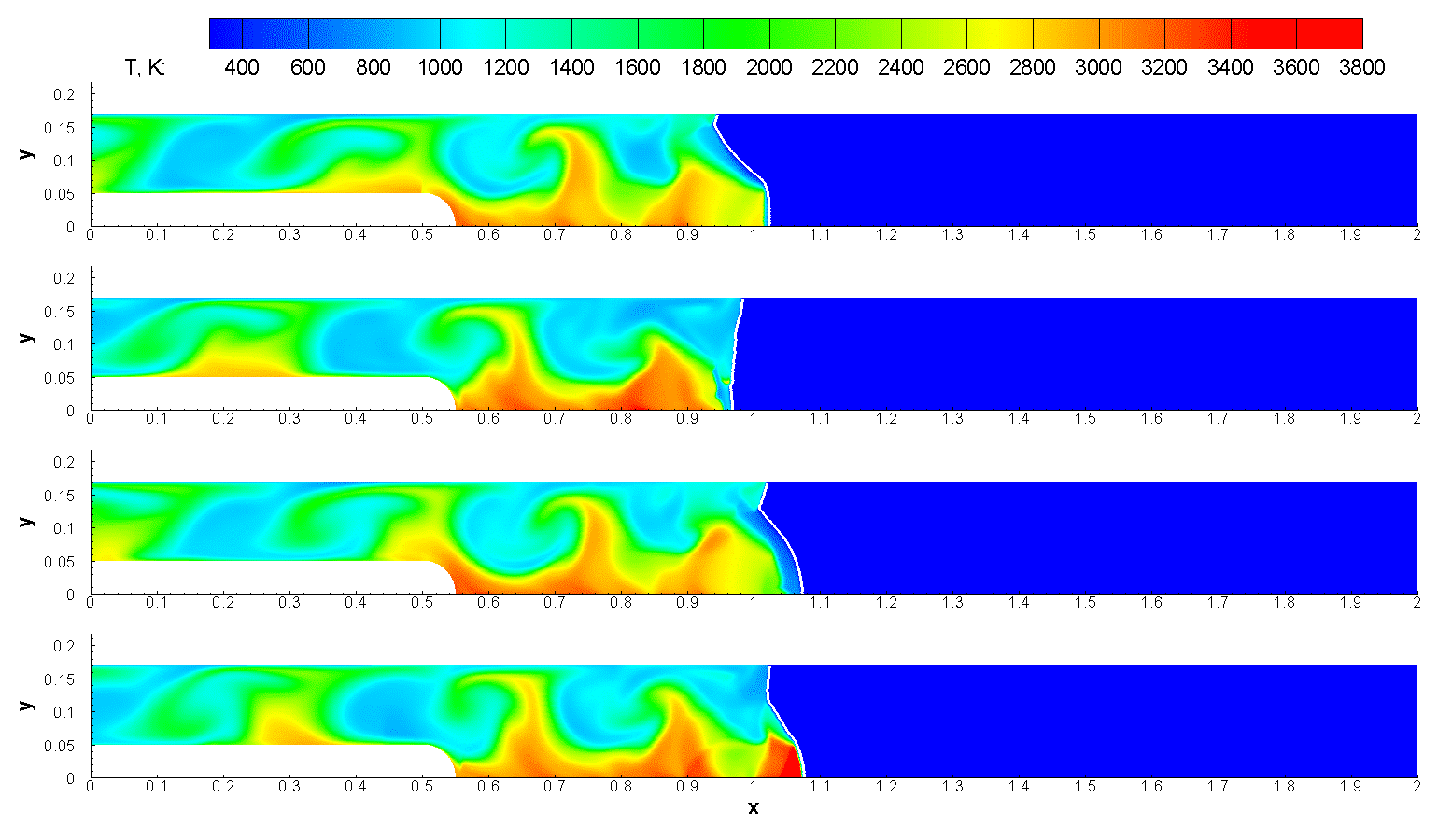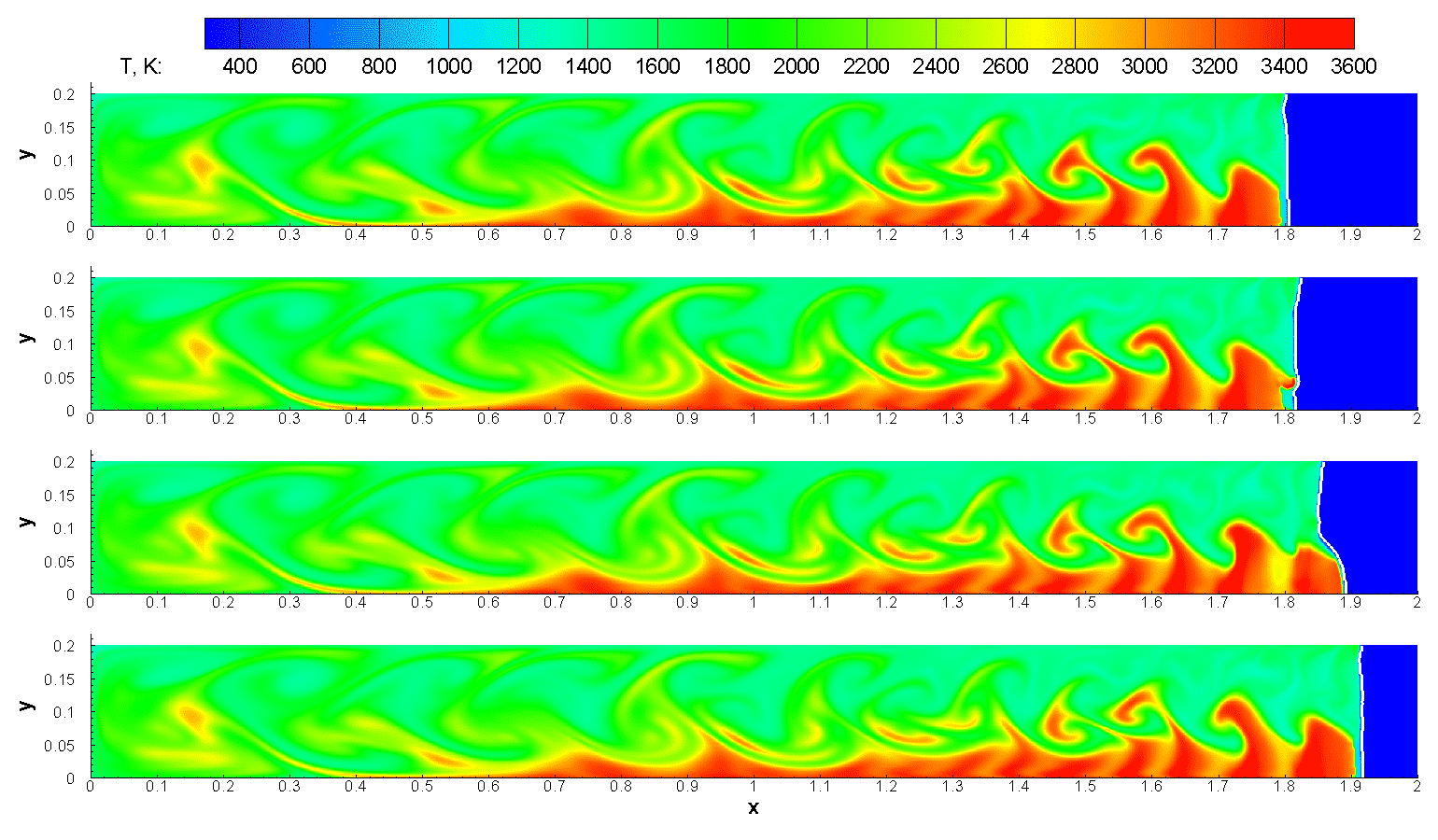The paper considers problems of detonation initiation in the supersonic flow of stoichiometric propane-air mixture, which partially or fully fills in the channel cross-section. The initiation in the flow takes place due to a “bench” or a wall which fully blocks the channel, and in the medium at rest it is caused by explosion. The investigation is performed within the framework of single-stage combustion kinetics by the numerical method based on the S.K. Godunov scheme. Critical detonation conditions connected with the inflow velocity and explosion energy were determined. In all the discussed processes one can find then unknown detonation propagation mechanism, which is conditioned by formation of complicated wave flow structure, characterized by shock wave penetration in the inert gas to the layer in front of the detonation wave, with the resulting warm-up and combustion. The process is periodic in nature, and differs from standard cellular detonation in the uniform medium. The existence of critical inflow velocities was established upon which qualitative and quantitative flow pattern is dependent. In the uniform flow two different detonation modes were obtained – with stationary wave on the bench and with the wave propagating to inlet channel section. In the combustible mixture layer we found three detonation modes, i. e. with stationary wave on the bench (Fig. 1) and with the wave propagating to the inlet channel section in the form of stationary wave complex or in the mode of galloping layered detonation (Fig. 2 for the channel with a bench, Fig. 3 for the channel with a wall blocking the channel).

Fig. 1. Stationary detonation in the combustible mixture layer (temperature isolines)

Fig. 2. Phases of galloping layered detonation in a channel with bench (temperature fields)

Fig. 3. Phases of galloping layered detonation in a channel with blocking wall (temperature fields)
As the flow rate increases, the rate of wave travel in direction of the inlet section decreases and at the rate equal to the critical one the wave turns to the stationary mode.
2D and 3D supersonic flows have been examined in several configurations. 2D channels were plane or axisymmetric (Fig. 4) with different widths and forms of the bench in the plane case and the central rod in axisymmetric case. The width of the jet as well as the inflow velocity was also variable.

Fig. 4. Galloping layered detonation in a circular channel with a rod in the center
3D channels differed by forms and sizes of a bench, cross-section forms and sizes (rectangular or circular) and combustible mixture jet cross-section form and location. For several configurations the obtained patterns of the flow were similar to patterns of 2D flows. Particularly, the 2D galloping regime of detonation was observed in 3D calculations. In some cases the unsteady wave structure of the flow was much more complicated as compared with 2D galloping detonation due to propagation of strong transverse shock waves (Fig. 5).

Fig. 5. Pressure field under 3D galloping layered detonation in a channel with inclined bench. The layer is located near the upper wall
The original parallelized software package with graphical interface was developed and used to perform numerical investigation. The calculations were performed on supercomputer “Lomonosov”.
The work was supported by the Russian Science Fund (Grant No. 14-19-01759).

